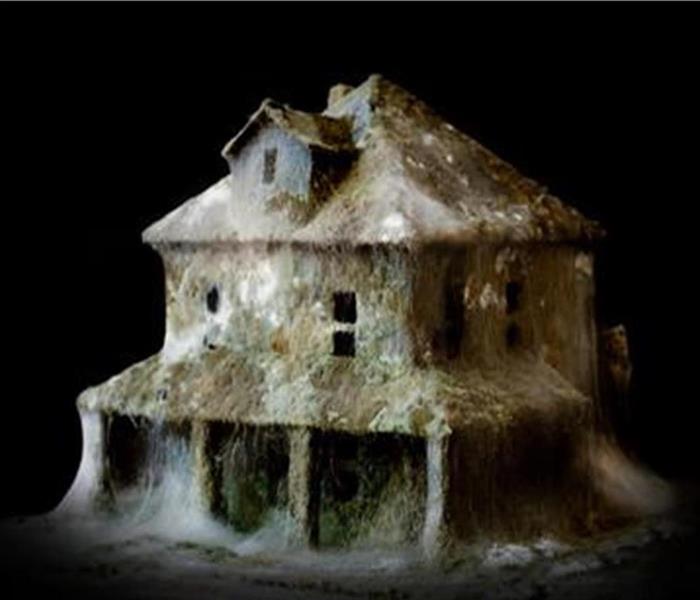5 Levels of Mold Remediation
8/28/2017 (Permalink)
 Molds destroy the material they feed on, including walls, carpets, insulation and ceilings. Unless dealt with and removed, it will continue to grow.
Molds destroy the material they feed on, including walls, carpets, insulation and ceilings. Unless dealt with and removed, it will continue to grow.
When dealing with mold contamination in your home it can be difficult to decide when a mold remediator is needed or what you can take care of yourself.
In the following 5 levels, you will have a guideline to go by when removing mold from your home:
- Level I (10 square feet or less)
Mostly found on ceilings or baseboards. Level I mold contamination may be cleaned without hiring a mold remediator, but there are several important safety precautions that you need to know: - Do not attempt cleaning mold if you suffer from asthma, allergies, or immune disorders
- Wear gloves, eye protection, and an N95 disposable respirator
- Vacate from your work area any infants less than 12 months old, individuals recovering from recent surgery, anyone with a suppressed immune system, or people with chronic lung diseases such as asthma, sever allergies, emphysema, etc.
- Contaminated materials that cannot be cleaned should be removed from your home in a sealed plastic bag to prevent an infestation in another part of your home
- Clean your work area when you’re done with a damp cloth or mop
- Make sure all areas are left dry and visibly free of mold contamination
- Level II (10-30 square feet)
About the size of one wall panel. To clean, the same precautions used in Level I should be taken. - Level III (30-100 square feet)
The size of patches of mold on several wall panels. To clean, the same precautions used in Level I and II should be taken, as well as: - Seal ventilation ducts/grills in the work area and areas directly adjacent with plastic sheeting
- Vacate everyone from your work area until work is completed.
- Level IV (greater than 100 square feet)
An infestation depending on how much greater than 100 square feet may require the assistance of a mold remediator. If not, the same requirements should be followed as were needed in levels I, II, and III along with the following: - Every worker must be trained in the handling of hazardous materials and equipped with full face respirators with high-efficiency particulate air (HEPA) cartridges, with disposable protective clothing covering both head and shoes.
- Make sure workers completely isolate their work area from the rest of your home with sheeting sealed with duct tape, including ventilation ducts/grills, fixtures, and any other openings.
- Air monitoring should be conducted prior to moving back into your home to determine if it is fit to reoccupy.
- Level V (Air Conditioners and HVAC Systems)
All remediation procedures for air conditioning units and HVAC systems should be left to professionals. Procedures for level V remediation for areas larger than 10 square feet are the same for all previous levels with the following precautionary measures added: - Shut down the HVAC system prior to remediation
- Growth-supporting materials that are contaminated, such as the paper on the insulation of interior lined ducts and filters, should be removed and sealed in plastic bags
- A variety of biocides – broad spectrum antimicrobial agents designed to prevent the growth of microorganisms – are recommended by HVAC manufacturers for use with HVAC components, such as cooling coils and condensation pans. HVAC manufacturers should be consulted for the products they recommend for use in their systems.
Do you have mold in your home or business? With questions or if you need a mold remediator, call our 24/7 Emergency Service line at (330) 966-2377. Request help online by clicking here.






 24/7 Emergency Service
24/7 Emergency Service